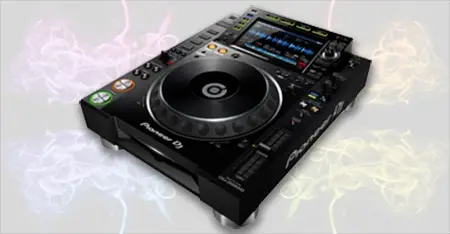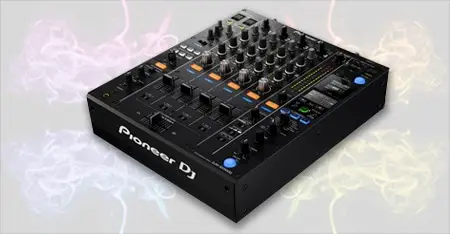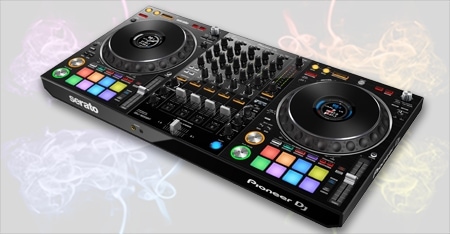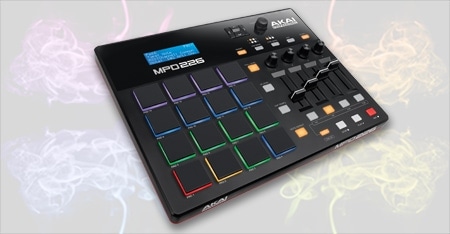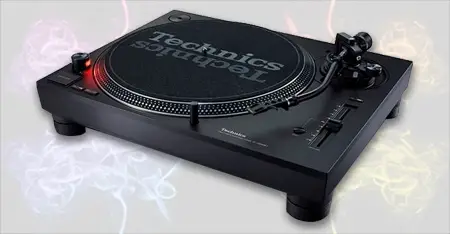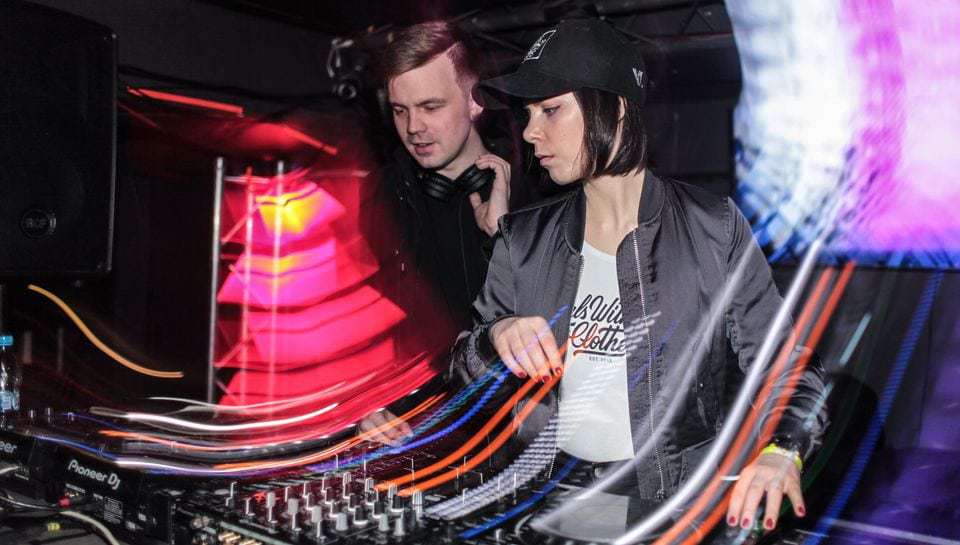
You will often see online ups to DJ is listed as playing back to back. Normally these DJs are either good friends or at least on the same label or management agency. However they happen, the question remains the same, how to DJ back to back.
While most back to backs are pre-organized they can also happen spontaneously. For example, if DJs are playing one after the other, they may instead decide to play together for the entire set.
There are a couple of different ways to play back to back sets and this depends on the setup.
Sharing the Same Setup
Contents
This is the most obvious and easiest way to do back to back sets and it is when both DJs use the same set of decks (see our recommended decks here). When doing this, one DJ can plug their USB music library into one deck while the other plugs into the other. This gives them both access to their individual libraries while being able to use the same monitor speakers to hear what is going on in the booth.
When using this setup, you will either need to share the same set of headphones and pass them between each other after each mix. Or, if you want to use your own headphones, then you will be required to switch them over each time it is your turn to play.
Decide the Number of Tracks Each
It is a good idea before you start your back to back to decide how many tracks each DJ is going to play. While the obvious might be just one track each, this can actually cause a bit of difficulty.
As a DJ, you will have to select a track that works with the current track playing instead of one that you really would like to play. So instead, it is common to do two tracks per DJ.
This allows you to do a smooth mix out of the current track. And then using the second choice, you can really take the set in a direction that you wish to go. So think of it as track one being a nice mix out that sets you up to play the track you really had in mind.
This just adds an extra level of thought and flow to back to backs as each DJ has that little extra bit of time to construct their mixes.
The other benefit of doing this is that you might have favorite mixes or rehearsed routines and having two tracks allows you to slot those in.
Also when it comes to sharing the same setup, you will often find yourself having to tweak, EQ or nudge platters while the other DJ is setting up or creating a mix. So just be sure you are comfortable and confident with each other. So that minor adjustments can be done without steps on the toes of the other DJ or their mixes.
I have on occasion seen a DJ tell off their partner who was trying to adjust EQs in the middle of his mix. So just know what the boundaries are and what you are comfortable with in terms of each other’s DJing and skills.
DJing on Two Setups
This can be a little bit more of a complex setup. In that, you would need to decide beforehand who is going to have the master mixer and who is going to route through it. Bear in mind that whoever has the master mixer has the more control of the two of you.
Doing this is better than having two individual feeds running to the house system otherwise you risk not being able to hear what the other DJ is doing.
But by having one set of decks routed through a channel on the second set of decks then you will both be using the same monitor speakers. Meaning you will be able to hear exactly what is going on front of house.
Using a double also setup allows a lot more freedom.
For a start, you don’t have to share headphones, you’ll always just have your own plugged in.
Then also when it comes to mixing because you have your own setup and your own music library, then you can take time to fully plan your mixes. This is because you can be track selecting and beatmatching the entire time that your partner is actually playing out through the system.
If you are a touring DJ who takes their own setup, then you could actually have two unique setups.
For example, your DJ partner might like using Pioneer decks (see our recommended decks here) whereas you prefer Denon. Therefore having a dual setup allows you to have the exact kit that you prefer to use and are most practiced on.
Having a double setup also lends itself to playing at least two tracks each. As you are able to use make full use of the left and right decks and construct mixes to the full extent of your ability.
A full breakdown of the different types of setup is covered in this article.
Continuous Communication…
One of the key things to remember when doing a back to back, regardless of the setup, is that constant communication between DJs is key. This goes both in terms of deciding things like boundaries before the show, but also during the show itself.
This will probably be a combination of actual talking but also pseudo-sign language.
When you are playing back to back, you are having to let go of some control, and communication helps to keep the set flowing.
For example, your track might be running out so you need your partner to speed up their mix. Or the drop/break down may be coming, in which case you can count them in to drop their track.
Of course, knowing the music really does help, but not every DJ can know every single track. This is where keeping an open dialogue really helps. Plus it will produce an entirely more cohesive back to back set for the audience.
Love DJ gear?
So do we, check out our favorites…
Have Fun With the Mixing
When you are playing back to back you do have the opportunity to add extra layers to each other’s mixes, particularly when playing on two setups.
For example, if your partner is already mixing two tracks, then you could drop an acapella or some effects over the top, therefore adding an entirely new dimension and live mashup element to the back to back.
This is especially easy if they are running through your mixer.
A way for both DJs to be able to do this to one another’s mixers is to actually have a central third mixer that acts as the master mixer, which both setups channel through. That means whoever is laying down the main beat, the other DJ is able to add acapellas or effects using the controls on the master mixer.
Adding extra layers in this way allows you to be at your most creative during b2b sets and it makes them really spontaneous and unique. Working in this way allows you to bounce off each other and get inspired by the skills and music knowledge of the DJ.
Just remember, that again, communication is a huge part of doing this successfully.
Knowing Each Other’s Style
You need to be familiar with the style with which your DJ partner plays and mixes so that you can have a fair guess of what they are going to do next. This way you’ll have a fair bet that any extra layer that you are adding is going to work.
The same goes for knowing what genre they are playing currently and then knowing what you have in your library, so you can add extra, exciting layers to on top.
You want to be careful to always be adding flourishes to a mix, instead of accidentally over complicating, or even overloading, the audience. It can be all too easy to muddy a mix by trying to add too many conflicting details.
Simple layers that work and are mixed well together well will sound way more effective than overly complicated mixes that have not been thought through properly.
Knowing your DJ partner’s style also helps influence what you choose from your music library. As a good DJ, they will likewise do the same and as you inevitably have slightly different styles & music tastes, then it creates a really interesting middle ground.
For the audience, this can make for much more interesting listening as they are never quite sure what to expect next. However, because both DJs are skilled, you know, that is going to work and be in context.
This is what is so exciting about back to back mixes.
So be sure to think about what type of music your DJ partner loves to play and then work out what in your library is going to complement their style.
Engaging With the Audience
One of the great benefits of playing back to back is how much time you get to spend not mixing during a set.
While this might feel strange at first, and the inclination might be to stand back or even try and fill your time with your phone. It would be much better spent engaging and interacting with the audience.
Doing this helps them feel much more involved and can really help boost the energy of a dance floor. When the audience sees you dancing around, enjoying their partner’s music, it creates an exchange of energy and helps those in the crowd to enjoy the music too.
You can even take this to the extreme.
Often in our DJ sets, we would jump down from the booth and actually dance in the crowd, along with everyone else. This always went down an absolute storm, people loved it.
So why not give ot a try while your partner is taking their turn, really get involved and engage with the crowd. The more you do it, the more fun not only the audience will have, but probably yourself as well.
This also helps you feel more engaged in the whole back to back experience. It also adds a level of showmanship to the b2b. The technical aspect is all well and good and you are well versed in the skills. But always remember to look at it from the audience’s points of view.
If you see either DJ just standing around, just waiting for their turn to play their next bangers then it’s going to feel like they are disinterested, and therefore it’s going to be easier for those in the crowd to lose interest and go to the bar.
Never be afraid to jump around and never forget that you are putting on a show.
Besides, a back to back show is always a team effort. Always be sure to hype up and enjoy your partner’s tracks just as much as you hype and enjoy your own.
Really the key to all of this is to ensure that you are always paying attention to what is going on with your partner mixes and with the music in general. The last thing you want to do is miss a huge drop where the entire venue is going nuts. But you’re not involved because you weren’t paying attention.
How to DJ Back to Back… Some Key Things to Remember
B2Bs really boils down to showing respect to the other DJ. Both in terms of their skills and their tracks. So let’s just run through a quick list.
Know When to Mix
Every DJ’s mixing style is different. Some mix a lot quicker between tracks than others for example. When doing back to back, gauge your partner’s mixing style and play appropriately.
What I mean by this is don’t always immediately mix out of their tracks as soon as they give you their headphones. Instead, let the track play out and let it be enjoyed by the DJ and the audience before mixing your next track in.
Remember to Take a Step Back
I have mentioned above about maintaining the flow of back to back sets. Therefore it is important to occasionally step back and figure out if your tracks selections are helping add to the overall flow and direction of the set.
This is because when you have two different DJ, particularly if they have strong individual styles, it can be easy for back to back sets to sound disjointed. Especially when you have two DJs constantly pulling in different directions.
To prevent this, remember to be subjective and gauge whether your selections are pushing the set in a similar direction and flow. If it feels like you are constantly battling to go one way or the other then you probably are.
Therefore, always be ready to adjust your selections for the benefit of the set’s cohesion and, most importantly, the crowd’s enjoyment.
Remember it is about them, not you.
Read the Crowd as Well as the Other DJ
This goes further to the comment above, as well as the point about communicating. It pays to really keep an eye on the crowd to make sure they are going with you on this back to back journey.
As well as reading the crowd, you’ll also want to read your DJ partner. If you two are feeling disjointed or disconnected from what’s going with each other, then that is going to show in the mixes and the set overall. So be sure to check in with each other.
While you should never tell another DJ how or what to play, just make sure that you are adjusting your selections and matching each other’s mood and style. This way you will give the audience the best possible experience of a back to back set.
How to DJ Back to Back Conclusion
One of the reasons back to back sets are so exciting and unpredictable is because they can quite easily go wrong. As with anything great, it is a knife-edge between genius and car crash.
Therefore, by being flexible, confident in your own skills and trusting your DJ partner you can create some truly spectacular moments that would have been virtually impossible to plan ahead of time. And, in all likelihood, can never be recreated again.
Most of all, have fun. All the while remembering that playing back to back is not only about you and the audience. It is about you and your partner, as a team, working with the audience to create something truly special.
What Does it Mean When DJs Play Back to Back, B2b?
Back to back, otherwise known as B2B is when you have two DJs on stage at the same time. Generally, these won’t be normal shows. They might only be performing together as a special one-off for that event.
This will usually be arranged beforehand, although it can happen spontaneously as well. The DJs will arrange between them how many songs they will play each during the back to back. Generally, this will be one track or two tracks each.

